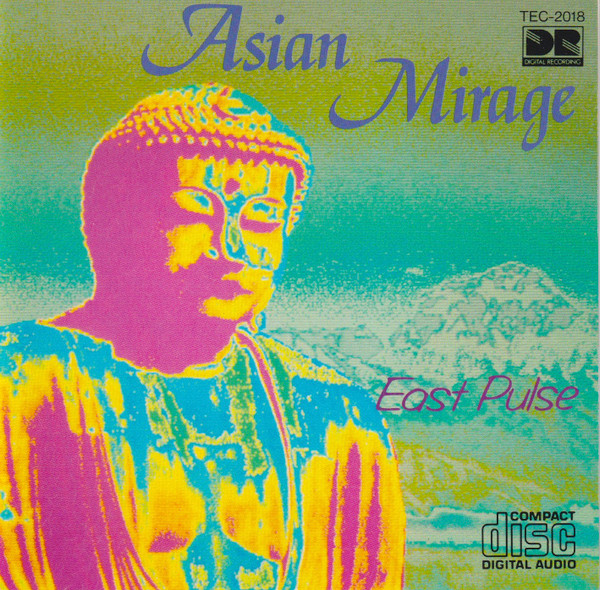Sometimes there isn’t any time better than the right time to share something. And in my case, it’s now or never, for East Pulse’s Asian Mirage, a fascinating curio or one-shot release by Japanese jazz flutist Toshiaki Yokota and multi-instrumentalist extraordinaire Chito Kawachi, who we’ll get around to later.
It’s not often an album’s title tells you most of the story but Asian Mirage is just that kind of an album. Much like Hideki Matsutake’s Logic by his Logic System, this album exists in a period of uncertainty.
You see, in some way, East Pulse was the creation/idea of huge Japanese electronics conglomerate Toshiba to promote the compact disc as a new format for listening to music. With a dearth of releases promoting the format, the only way to jumpstart this kind of content was to repackage or reimagine Japanese-signed artists for worldwide markets.
So, in our case, we got to hear Toshiaki Yokota’s beginnings as a quasi-spiritual jazz artist folded into a new duo he’d dub “East Pulse”. And rather than explore more jazz, he’d tack in a new direction – explore the music of Asia as a vibrant, ongoing influence.
It’s what makes Asian Mirage a bit fascinating. Using all sorts of “Oriental” instruments, musical boundaries are blurred and that idea of a “mirage” holds true: one finds Toshiaki’s compositions have a certain otherworldliness to them that renders them their own intimately, uniquely, divined. Traditional instruments make the journey to other traditions, new ones are crafted for new purposes, floating motifs start coalesce, and on songs like “Peace In The Indus” and “Suite: Asian Encounters”, much like the infrared light of the cover, the heat of the moment radiates palpably in East Pulse’s surprisingly avant-thought-out music.
But enough of my thoughts and suppositions. I’d rather Toshi chart out what his intentions were on this album…

Notes by the Composer:
I’ll leave it to each listener of this album to form his or her own impressions of the individual numbers. But what I aimed at through this album was to express my strong belief that music has no borders, and that music is essentially a sweet, gentle and beautiful expression.
In this album I played 13 different flutes. In the order in which they appear in the album, they are:
Track (#) Flute Type:
[1] (1) Yokobue (horizontal Japanese flute) (Yamaha), and (2 & 3) Recorders (sopranino and soprano played at the same time); [2] (4) Persian flute; [3] (5) Bass flute; [4] (6) Conch shell, (7) Alto flute, (8) Mexican flute and (9) Shinobue (Japanese flute); [5] (10) Indian flute; [6] (2 & 3) Recorder (sopranino and soprano), and (11) Flute (Muramatsu); [7] (12) Moroccan flute; [8] (13) Flute of my make.If by hearing this album the listener feels even a little of the sentiments of “Oriental” music as I have tried to express it, I will have achieved my intentions. Thank you.
– Toshi Yokota
